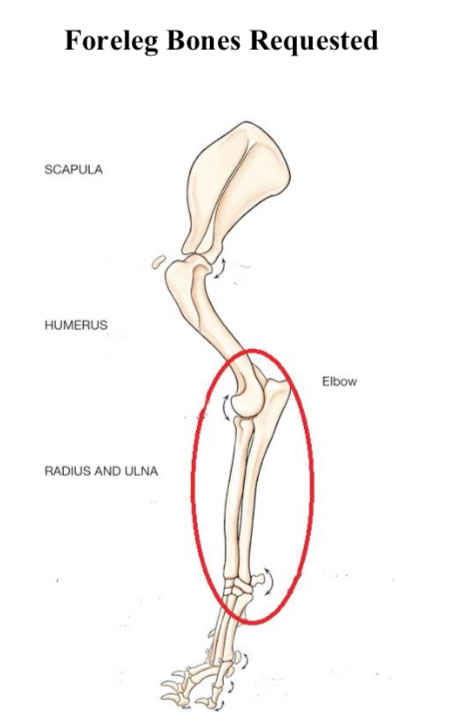
Wolf tissue samples requested in Southeast Alaska
October 26, 2020
A petition to list Alexander Archipelago wolves under the Endangered Species Act (ESA) was submitted to the U.S. Fish and Wildlife Service (USFWS) on July 15, 2020. Information collected during the sealing process is critical to demonstrating the state's ability to manage wolves and avoid the wolves being listed under the Endangered Species Act (ESA). If the wolves in Southeast Alaska are listed, state and federal hunting and trapping seasons will be suspended, and management will be assumed by the US Fish & Wildlife Service until wolves are delisted (years). Sealers will take a small piece of skin (1.5 in. by 0.5 in) from the cut edge of the hide and a dime size piece of muscle from all wolves. Sealers will also accept a front leg bone (see picture below) from harvested wolves. Be sure to tell the sealer which foreleg bone came from which wolf. Only one foreleg bone per wolf is needed.
The Alaska Department of Fish and Game, Division of Wildlife Conservation also asks that trappers provide the exact date when each wolf was harvested and an accurate location of harvest. Instead of reporting the harvest location as “Tuxekan Passage”, a large non-specific location, use a specific location such as “mouth of Staney Creek” or “Kussan point”. This information will remain confidential. This information helps ADF&G manage wolves. The tissue samples are used to estimate the Unit 2 population, learn about how Southeast Alaska wolf populations are related, the degree of movement among populations, and wolf diet. The specific date and location of harvest helps ADF&G improve the Unit 2 population estimate. Leg bones allows the ADF&G to determine age class of harvested wolves (pup, yearling, or adult). Documenting pups in the harvest indicates wolves are reproducing and the population is healthy. If you have any questions call the Ketchikan Area office at: 907-225-2475.
On the Web
Edited By Mary Kauffman, SitNews
Source of News:
|
||||
